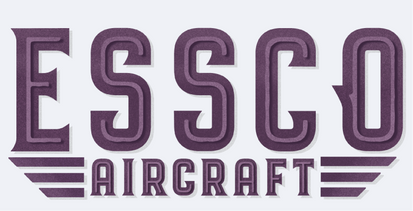
The Rutan VariViggen: The Canard Pioneer That Never Took Off
Burt Rutan is widely known for his groundbreaking aircraft designs, but before the VariEze, Long-EZ, and SpaceShipOne, there was the VariViggen—his first original homebuilt aircraft. Inspired by Swedish fighter jets and built with unconventional aerodynamics, the VariViggen was a bold attempt at improving stability and control for small aircraft.
However, despite its promising design, the VariViggen never reached mass production. So what made this aircraft special, and why didn’t it take off commercially?
Why Was the VariViggen Built?
Burt Rutan designed the VariViggen in 1968 as a personal project while working as a flight test engineer at Edwards Air Force Base. Inspired by the Swedish Saab 37 Viggen, a delta-wing, canard-configured fighter jet, Rutan believed a similar design could enhance stability, stall resistance, and maneuverability in a general aviation aircraft.
Unlike conventional aircraft, which rely on a tailplane for pitch control, the VariViggen featured a forewing (canard) configuration, meaning the smaller forward wing provided lift while also controlling pitch. The goal was to create an aircraft that was forgiving to fly and resistant to stalls—a revolutionary concept for homebuilt aircraft at the time.
The aircraft was constructed using wood, fiberglass, and aluminum over a steel-tube fuselage. This combination made it sturdy and durable but also heavier than Rutan’s later designs, which would go on to use advanced composites to improve weight and efficiency.

Photo Credit: flickr.com
What Would the VariViggen Have Done?
Had the VariViggen reached production, it could have been a pioneering aircraft for homebuilders, offering:
✔ Improved Stability – The canard configuration made stalls almost impossible, increasing safety compared to traditional aircraft.
✔ Aerodynamic Efficiency – The delta-wing and canard setup provided better lift distribution, making the aircraft stable at various speeds.
✔ A Homebuilt Alternative to Traditional Aircraft – Rutan envisioned a plane that was both practical and fun for homebuilders who wanted something different from standard single-engine planes.
✔ A Foundation for Future Canard Designs – The VariViggen was a testing ground for concepts that would later influence Rutan’s VariEze and Long-EZ, both of which became far more successful and widely adopted by homebuilders.
While the aircraft was a technical success, it ultimately did not go into mass production.
Why Didn’t the VariViggen Reach Mass Production?
Despite its innovative design, the VariViggen had several drawbacks that kept it from wider adoption:
1. Heavier and More Complex Than Expected
- The VariViggen was built using wood, fiberglass, and aluminum over a steel-tube frame, making it heavier than later Rutan aircraft.
- Unlike the VariEze and Long-EZ, which used lightweight composite materials, the VariViggen’s structure limited its speed and efficiency.
2. Limited Performance Compared to Later Rutan Aircraft
- While the VariViggen was stable and safe, it was not as fast or efficient as other experimental aircraft.
- When Rutan introduced the VariEze in 1975 and the Long-EZ in 1979, both designs were lighter, had better fuel efficiency, and had longer range—which made them more attractive to homebuilders.
- The VariEze quickly overshadowed the VariViggen, leading to the decline in interest for the earlier aircraft.
3. Lack of Commercial Interest
- Unlike the VariEze, which attracted thousands of homebuilders, the VariViggen never gained enough momentum to justify full-scale kit production.
- Only 12 to 20 VariViggens were ever built, most of them by dedicated homebuilders who admired Rutan’s early work but preferred his later aircraft.

Photo Credit: airliners.net - Zack Menz
The VariViggen’s Legacy
Though it never became a mainstream aircraft, the VariViggen was crucial to Burt Rutan’s career and the development of modern canard aircraft.
✔ It Was Rutan’s First Step Toward Experimental Aircraft Fame
- The VariViggen was his first homebuilt design, proving that unconventional configurations could work for general aviation.
- It helped Rutan refine ideas that later led to the VariEze (1975) and Long-EZ (1979)—both of which became wildly popular among homebuilders and revolutionized the experimental aircraft market.
✔ It Introduced the Canard Concept to Homebuilders
- The VariViggen was not the first homebuilt canard aircraft, but it was one of the earliest practical ones.
- Rutan’s work made the concept more accessible and paved the way for efficient, stall-resistant aircraft that would become his signature designs.
✔ It’s a Rare but Admired Piece of Aviation History
- Though few exist today, the original prototype VariViggen (N27VV) is preserved at the EAA AirVenture Museum in Oshkosh, Wisconsin.
- Some privately built VariViggens remain airworthy, and enthusiasts still celebrate the aircraft for its role in Rutan’s legacy and its contribution to experimental aviation.
Conclusion: A Stepping Stone to Innovation
The VariViggen was never meant to be the final destination—it was the beginning of something bigger. While it didn’t become a mass-produced aircraft, it laid the groundwork for Rutan’s future success and helped shape the evolution of homebuilt aircraft.
Its innovative design proved that canards could work in general aviation, leading to the VariEze, Long-EZ, and ultimately, Rutan’s later aerospace achievements.
Though only a handful of VariViggens were ever built, its place in experimental aviation history is undeniable—a bold first step from one of aviation’s greatest minds.
See More:
Plane & Pilot Magazine - Rutan VariViggen
Experimental Aircraft Association (EAA) - 1972 Rutan VariViggen - N27VV
Museum of Flying - Rutan VariViggen
The Museum of Flight - Rutan Model 27 VariViggen
